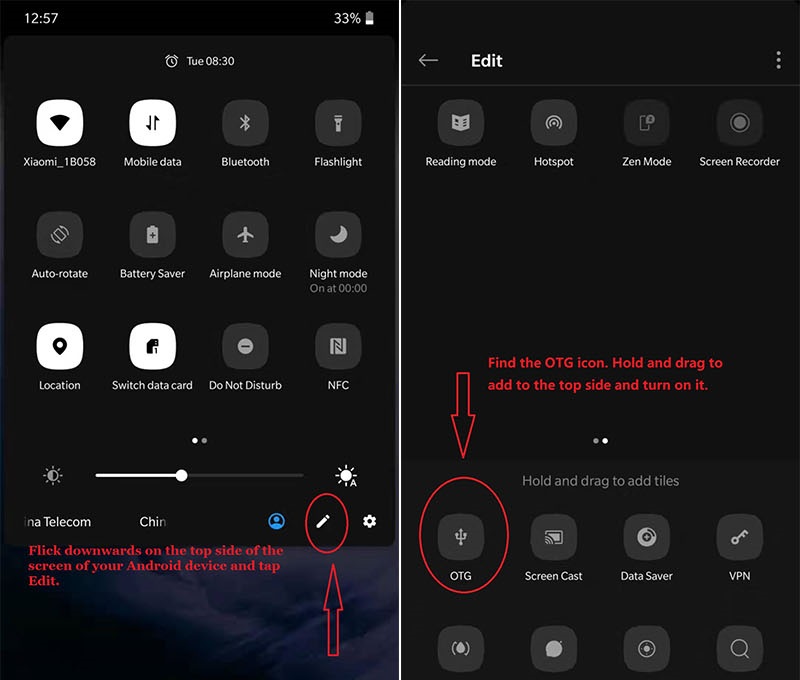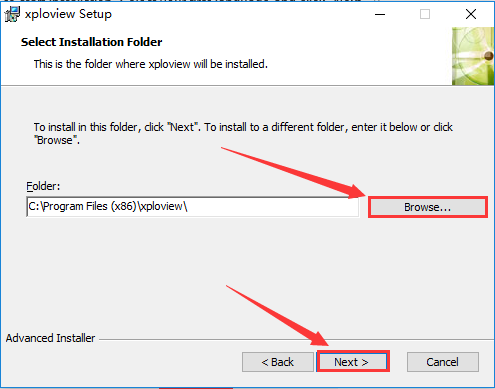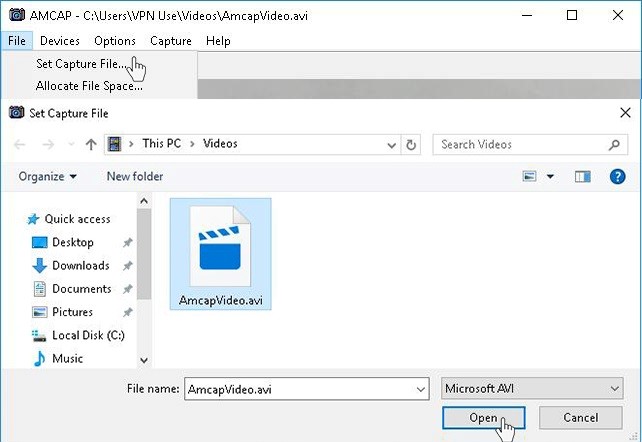- Suni Imaging Microsystems Usb Devices Driver Download For Windows 10 Windows 7
- Suni Imaging Microsystems Usb Devices Driver Download For Windows 10 64-bit
- Suni Imaging Microsystems Usb Devices Driver Download For Windows 10 Usb
- Suni Imaging Microsystems Usb Devices Driver Download For Windows 10 Pro
Suni Imaging USB-1600 Intraoral X-ray Imaging Device. Version 10.1 Build 4 Release Date: NA. Fixed issue with images being labeled as retake with no tooth association during layout capture. (B716) Version 1.2 Build 1 Release Date: 3/30/2010. Redesign of the internal imaging engine. Change made to enable support the 64-bit drivers. Defaults changed for 2000 sensors (Gamma =.7; Contrast = +10). Download usb digital microscope driver for free. System Utilities downloads - Plugable Digital Microscope Driver by Plugable Technologies and many more programs are available for instant and free download. Press the Enter key to continue the Windows installation. After the OS installation is complete, install the NVDIA display and chipset drivers as described in Installing Display and Chipset Drivers for Windows 2003, Vista or XP. 3.4.2.3 Installing Display and Chipset Drivers for Windows 2003, Vista or XP. Standard Microsystems Corp: Sunplus Technology Co Ltd: Suyin Corp: Synaptics: Taiyo Yuden: TDK Corp: Teco Image Systems Co Ltd: Tekram Technology Corp Ltd: Texas Instruments (TI) Texas Instruments Inc: Toshiba: TVS Electronics Ltd: TWINHAN Technology: United Parcel Service of America, Inc: USI Co Ltd: VIA Technologies Inc: Virata Ltd: Visioneer.
PEmicro's PROG for ARM® Cortex™ Processors flash programmer software allows you to program/reprogram external flash devices from many ARM device manufacturers in-circuit, via one of PEmicro's compatible hardware debug interfaces. The programmer talks to the processor's Background Debug Mode through a compatible hardware interface (sold separately), which connects the parallel port or USB port of a PC to a mini-10 or mini-20 pin JTAG connector on the target system.
PROG for ARM Cortex processors also includes the command-line version of the programmer software CPROGACMP. Together they are perfect for development, production line programming, or field firmware upgrades.
Licensing Update
The license that activates PROG now resides on a Multilink debug probe rather than in the software itself. The user who activates the software will choose a Multilink on which to permanently install the license. The allows that Multilink to work with PROG on any machine where a supported version of the software is installed. No license is required to use PROG software with Cyclone programmers, as the Cyclone includes PROG software.
Check our PROG Licensing blog post to see which Revisions of Multilink debug probe are supported.
Note: The PROG software itself is unchanged, it is only the licensing which has been updated.
| Sun StorageTek Dual 4 Gb FC Dual GbE HBA Installation Guide |
| C H A P T E R 3 |
| Software Installation |
After you have completed the hardware installation and powered on the computer, follow the instructions in this chapter for your operating system to install the HBA driver and any other utilities required for the installation.
This chapter contains the following topics:
Installing Software for the Solaris OS

This section contains the following topics:
Installing the Fibre Channel Driver
The qlc HBA driver for the Solaris OS is included with the Solaris 10 8/07 (s10u4) OS release; no further action is required. The latest version of the qlc driver is included with the following Solaris patches:
- 125165 (for the x64/x86 platform)
- 125166 (for the SPARC platform)
You can download these patches from the SunSolve website at:
To Install or Update the qlc HBA Driver From a Patch |
1. Log in as the root user.
2. Navigate to the directory that contains the patch.
3. Add the latest patch by using the patchadd command.
Installing the Ethernet Driver
Check the SunSolve web site to ensure that you have the latest patch clusters and security patches for the ethernet driver. You can download the latest patch clusters and security patches at:
Diagnostic Support for the Solaris OS
Diagnostic support for the HBA is included in the SunVTS software beginning with version 6.3. The SunVTS software is included with the Solaris 10 8/07 (s10u4) OS. The SunVTS software is also available for download at: http://www.sun.com/oem/products/vts
The qlctest utility, which is provided as part of the SunVTS software, supports the following functions:
- Connectivity verification
- Firmware version and checksum testing
- Self-testing
- Loopback tests
- External
- Internal, single-bit
- Internal, 10-bit
- Mailbox
Installing Software for the Red Hat/SUSE Linux OS
This section describes how to download and install the fibre channel and ethernet drivers required by the HBA. It also describes how to install diagnostic support software for the HBA. This section contains the following topics:
Downloading the Red Hat/SUSE Linux Drivers
This section describes how to download the fibre channel and ethernet driver for the HBA. This section contains the following topics:
To Download the Fibre Channel Driver |
1. Go to the QLogic support site for Sun Microsystems at:
2. Locate the table containing the SG-XPCIE2FCGBE-Q-Z model.
3. At the bottom of the table, in the Software for row, click Linux.
4. In the Red Hat or SUSE Linux table, find the appropriate driver (the file name is in the format qla2x00-vx.yy.zz-dist.tgz).
5. In the Download column of that row, click Download.
6. Save the file to a directory on the hard disk of the computer.
| Note - Because the driver distribution file is now larger than 1.44 Mb, it cannot fit on a 1.44 Mb floppy disk; therefore, you must use a USB driver or local hard disk to download the file. |

To Download the Ethernet Driver |
1. Go to the QLogic support site for Sun Microsystems at:
2. Locate and click the link for the Ethernet drivers.
3. Find and select the Go to Download Center link.
4. Type 82571EB in the search window and select search.
5. Locate and select Intel 82571EB Gigabit Ethernet Controller.
6. Using the drop-down menu, either select the individual OS or All Operating Systems, then click Go!.
Individual software downloads are now available.
7. Download and save the driver on the hard disk of the computer.
Installing the Red Hat/SUSE Linux Drivers
After you download the drivers, as described in Downloading the Red Hat/SUSE Linux Drivers, you can install the drivers by following the steps in this section:
1. To Build the Fibre Channel Driver
2. To Load the Newly Built Fibre Channel Driver
3. To Build and Load the Ethernet HBA Driver

To Build the Fibre Channel Driver |
The driver installation makes extensive use of the build.sh script, which is located in driver source (extras/build.sh).
From the source code, you can build a qla2xxx.ko module and a qla2xxx_conf.ko module for the host. You can then choose to load the driver manually or automatically, as described in To Load the Newly Built Fibre Channel Driver.
1. In the directory that contains the source driver file, qla2xxx-x.yy.zz-dist.tgz, use the commands shown in the following example.
2. Build and install the driver modules from the source code by executing the build.sh script.
This build script does the following:
- Builds the driver .ko files.
- Copies the .ko files to the appropriate directory:
/lib/modules/2.6.../kernel/drivers/scsi/qla2xxx - Adds the appropriate directive in the modprobe.conf.local to remove the qla2xxx_conf module when unloading the qla2xxx module.
- Updates the newly built qla2xxx_conf.ko module with any previously saved data in /etc/qla2xxx.conf.
3. Choose how you want to load the driver, as described in To Load the Newly Built Fibre Channel Driver.
To Load the Newly Built Fibre Channel Driver |
After you build the fibre channel driver, as described in To Build the Fibre Channel Driver, you can choose to manually or automatically load the driver. This section contains the following topics:
To Manually Load the Fibre Channel Driver |
After building the fibre channel driver, you can choose to manually load the driver. If you want to automatically load the driver, skip to To Automatically Load the Fibre Channel Driver.
1. Build the driver binary, as described in To Build the Fibre Channel Driver.
2. Manually load the driver by using the modprobe -v command.
3. Now that the fibre channel driver is manually loaded, you can build and load the ethernet driver, as described in To Build and Load the Ethernet HBA Driver.
4. If you want to manually unload the driver, use the modprobe -r command.
To Automatically Load the Fibre Channel Driver |
After building the fibre channel driver, you can choose to automatically load the driver. If you want to manually load the fibre channel driver, see To Manually Load the Fibre Channel Driver.
1. Build the driver binary, as described in To Build the Fibre Channel Driver.
2. Install the driver module (*.ko) files to the appropriate kernel module directory.
3. For Red Hat Linux users, edit the /etc/modprobe.conf file and add the following entries, if they are not present:
- alias scsi_hostadapter1 qla2xxx_conf (for use only with SANsurfer)
- alias scsi_hostadapter2 qla2xxx
4. For SUSE Linux users, edit the /etc/sysconfig/kernel file and modify the INITRD_MODULES directive as shown in the following example.
In this example, note that you must add the first module, qla2xxx_conf (for SANsurfer), followed by the qla2xxx module. The qla2xxx_conf module is for use only with SANsurfer while the qla2xxx module is a common module.
5. Change to the /boot directory.
6. Back up the current RAMDISK image.
Suni Imaging Microsystems Usb Devices Driver Download For Windows 10 Windows 7
7. Build the RAMDISK image with the mkinitrd -f command.
8. Reboot the system to load the RAMDISK image with the driver.
9. You can now build and load the ethernet driver, as described in To Build and Load the Ethernet HBA Driver.
To Build and Load the Ethernet HBA Driver |
1. Build the Ethernet HBA driver.
2. Change to the rpm directory.
3. Install the Ethernet rpms, using the same command for both Red Hat and SUSE OSes.
4. Use the depmod command to register the HBA.
5. Manually load the e1000 driver for all instances.
Diagnostic Support for the Red Hat/SUSE OS

Diagnostic support for the HBA is available through the SANsurfer PRO graphical user interface (GUI) utility or the SANsurfer command-line interface (CLI) utility. These utilities support the following functions:
- Connectivity verification
- BIOS, FCode, EFI, and firmware version information
- Link status, including topology, data rate, and statistics
- Vital product data (VPD) information
- Attached devices list
- Option ROM, NVRAM update utilities
- Loopback test
- Read/Write Buffer test
To Install Diagnostic Support for the Red Hat/SUSE Linux OS |
1. Go to the QLogic support site for Sun Microsystems at:
2. Locate the table containing the SG-XPCIE2FCGBE-Q-Z model.
3. At the bottom of the table, click Windows.
4. Locate the SANsurfer CLI (command-line interface) or SANsurfer PRO (GUI) diagnostic utility.
5. Click Download to copy diagnostic archive to a local file system.
6. Click Readme link for additional information.
Installing Software for the VMware Technology
The HBA drivers included on the VMware distribution are sufficient for supporting the HBA. No further action is required.
To verify that the drivers loaded successfully, look for the following lines in the /var/log/vmkernel file:
The first line indicates that the fibre channel driver loaded successfully. The second line indicates that the ethernet driver loaded successfully.
Installing Software for the Windows OS
This section describes how to download and install the fibre channel and ethernet drivers required by the HBA. It also describes how to install diagnostic support software for the HBA. This section contains the following topics:
To Download the Fibre Channel Driver |
1. Go to the QLogic support site for Sun Microsystems at:
2. Locate the table containing the SG-XPCIE2FCGBE-Q-Z model.
3. At the bottom of the table, in the Software for row, click Windows.
4. In the table for your Windows operating system, find the appropriate driver.
5. In the Download column of that row, click Download.
6. Save the file to a directory on the hard disk of the computer.
7. Unzip (extract) the driver files to a location on the hard disk of the computer.
To Install the Fibre Channel Driver |
After installing the HBA and restarting the computer, the Windows OS detects the newly installed device and displays the Found New Hardware with Fibre Channel Controller message. The Found New Hardware wizard launches.
| Note - This procedure requires a system configured with the latest Service Pack and Windows Update. |
1. On the first screen of the Found New Hardware wizard, click Search for a suitable driver for my device (recommended), and then click Next.
2. Browse to the location on the where you downloaded the Fibre Channel driver, then click Next.
Windows displays a message, letting you know it found a driver for this device.
3. On the Completing the Found New Hardware Wizard window, click Finish.
4. If the system displays the following message, click Yes to restart the computer:
To Download and Install the Ethernet Driver |
1. Go to the QLogic support site for Sun Microsystems at:
Suni Imaging Microsystems Usb Devices Driver Download For Windows 10 64-bit
2. Locate and click the link for the Ethernet drivers.
3. Find and select the Go to Download Center link.
4. Type 82571EB in the search window and select search.
5. Locate and select Intel 82571EB Gigabit Ethernet Controller.
6. Using the drop-down menu, select either the individual OS or All Operating Systems, then click Go!.
Individual software downloads will now be available.
7. Download and save the driver on the hard disk of the computer.
8. Navigate to the location on the hard disk where you downloaded the driver, and run the driver file.
The driver file is a self-extracting archive. When you run the file, the files are extracted to a temporary directory and the installation wizard is run to install the driver. After the driver is installed, the temporary files are removed.
Diagnostic Support for the Windows OS
Diagnostic support for the HBA is available through the SANsurfer PRO GUI utility or the SANsurfer CLI utility. These utilities support the following functions:
- Connectivity verification
- BIOS, FCode, EFI, and firmware version information
- Link status, including topology, data rate, and statistics
- Vital Product Data (VPD) information
- Attached devices list
- Option ROM, NVRAM update utilities
- Loopback test
- Read/Write Buffer test
To Install Diagnostic Support for the Windows OS |
1. Go to the QLogic support site for Sun Microsystems at:
2. Locate the table containing the SG-XPCIE2FCGBE-Q-Z model.
3. At the bottom of the table, click Windows.
4. Locate the SANsurfer CLI or SANsurfer PRO (GUI) diagnostic utility.
5. Click Download to copy the diagnostic archive to a local file system.
6. Click Readme for additional information.
Installing a CLI for Updating the BIOS and FCode
If you need to update the fibre channel BIOS and FCode, you can do so by using the SANsurfer command-line interface (CLI).
Suni Imaging Microsystems Usb Devices Driver Download For Windows 10 Usb
| Note - The SANsurfer CLI is supported by all supported operating system and technology versions except for VMware ESX Server 3.0.2. To use the CLI with the VMware technology, upgrade to ESX Server 3.5. |
Suni Imaging Microsystems Usb Devices Driver Download For Windows 10 Pro
If you have not done so already, you can download the SANsurfer CLI package from the QLogic support site for Sun Microsystems at:
Follow the installation instructions in the README.TXT file. Installation instructions are also available in the QLogic document, SANsurfer FC HBA CLI User’s Guide (SN0054614-00), which can be found on the QLogic web site,
For instructions on how to update the BIOS and FCode, see the SANsurfer FC HBA CLI User’s Guide at the QLogic web site.
| Sun StorageTek Dual 4 Gb FC Dual GbE HBA Installation Guide | 820-3783-11 |
Copyright © 2008, Sun Microsystems, Inc. All Rights Reserved.




